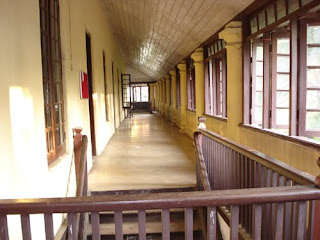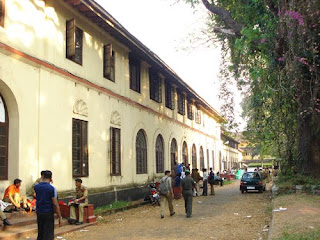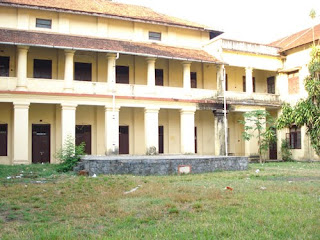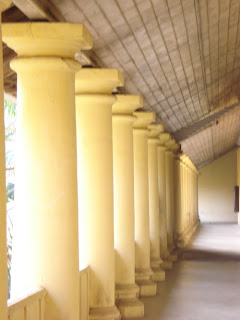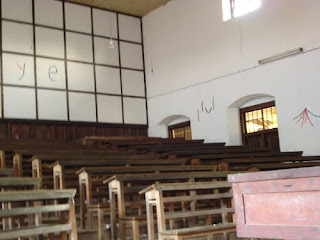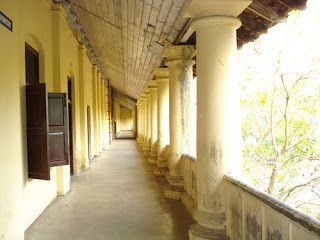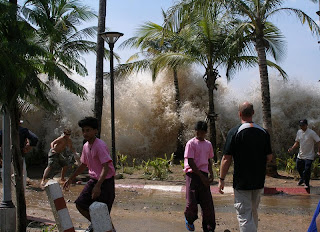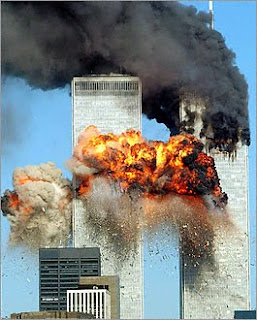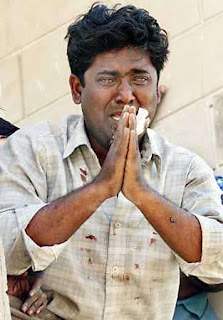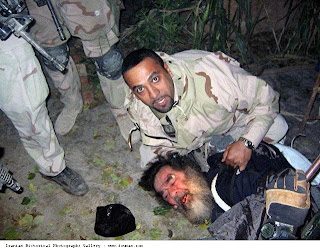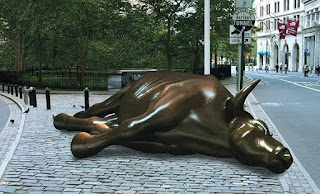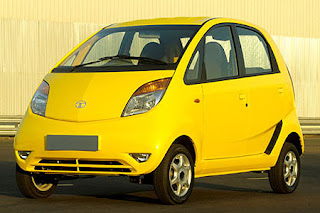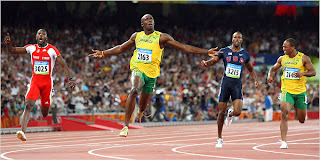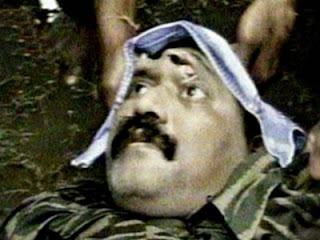A train of thoughts and writings on development, technology and the economy focusing on the socio-techno-economic-cultural surge of developing economies to regain and partake in leadership of the world. Written by George Easaw, member of the faculty of Business Administration of Allliance University, Bangalore, India. (This is purely an academic site, no commercial use is allowed. Photography rights lie with the respective organisations). Mention credits as needed.
Friday, January 29, 2010
The most powerful legislation in India ..
And the attacks continue ..
When a white man is attacked, it is racism and human rights organisations are out there making noise. When an Indian is attacked, it is just passing news, never deserving to be mentioned or taken note of. The Australian govt is still very much in denial mode , even after six months, as they are totally incompetent to nail the attackers of Indians in Australia. They are taken aback by this action of their citizens which is derogatory to the core. Why should a white man ever physically express his frustration and vent his anger at the growing clout of Indians worldwide ? This gets all the more serious when his own past credentials are doubtful with human rights violations against the displaced aborigines / original owners of the land. How long can the world close its eyes and ears ? Is it a one off incident happening very rarely or is it a collective expression of frustration and anger at the Indians ? How long can Indian govt show civility and patience to their Australian counterparts ? How many times more we have to teach the white man the basics of civilised behaviour ? Gandhiji taught them some sixty years back and now once again they are looking up to us for some more. Strange .. ge.. |
Thursday, January 28, 2010
Toyota is hit badly with accelerator pedal, floor mat problems ..
We want those jobs in clean energy ..
Saturday, January 23, 2010
No, not such a shameful retraction for the world's best climate scientists ..
Finally the chance to zip on the Elevated Highway to Electronics city ...
Digital Library and E-learning at T John Bangalore..
Friday, January 22, 2010
Tuesday, January 19, 2010
44 Deeemed Universities in India lose status ..
Sunday, January 17, 2010
Google and China ..
Saturday, January 16, 2010
Monday, January 11, 2010
62 ways to make 2010 your best year .. Robin Sharma ..
1. Remember that leadership isn't about your position. It's about your influence.
2. Get fit like a pro athlete.
3. Lift people up versus tearing people down.
4. Protect your good name. An impeccable reputation takes a lifetime to build. And 60 seconds to lose.
5. Surround yourself with positive, ethical people who are committed to excellence.
6. Remember that even a 1% daily innovation rate amounts to at least a 100% rate of innovation in 100 days.
7. Believe in your dreams (even when others laugh at them).
8. Measure your success, not by your net worth but by your self worth (and how happy you feel)..
9. Take an intelligent risk every 24 hours. No try-No Win.
10. Read "Buffett: The Making of an American Capitalist".
11. Watch "Man on Wire".
12. Regardless of your title at work, be a team builder.
13. Remember that business is all about relationships and human connections.
14. Say "please" more.
15. Say "thank you" more.
16. Know your Big 5: the five things that need to happen by the end of this year for you to feel its been your best year yet.
17. Read your Big 5 every morning while the rest of the world is asleep.
18. Read "As You Think". At least twice this year.
19. Be willing to fail. It's the price of greatness.
20. Focus less on making money and more on creating value.
21. Spend less, save more.
22. Leave everything you touch better than you found it.
23. Be the most positive person in every room you're in.
24. Run your own race.
24. Stay true to your deepest values and best ideals.
25. Write a handwritten thank you note to a customer/friend/loved one every day.
26. When you travel, send love letters to your kids on hotel stationary. In time, they'll have a rich collection to remember your travels by.
27. Read "Atlas Shrugged".
28. Be a problem solver versus a trouble maker.
29. Rather than doing many things at mediocrity do just a few things-but at mastery..
30. Honor your parents.
31. Commit to doing great work-whether anyone notices it or not. It's one of life's best sources of happiness..
32. Give more than you receive (another of the truths of happiness).
33. Have your 1/3/5/10/25 years goals recorded on paper and review them weekly.
34. Be patient. Slow and steady wins the race. The only reason businesses that went from zero to a billion in a year or two get featured in magazines is because 99% of businesses require a lot more time to win.
34. Underpromise and then overdeliver.
35. See part of your job as "a developer of people" (whether you work in the boardroom or the mailroom).
36. Wear your heart on your sleeve. When people see you're real, they'll fall in love with you.
37. Be authentic versus plastic.
38. Read "The Alchemist".
39. Remember that life wants you to win. So get out of your own way.
40. Consider that behind every fear lives your next level of growth (and power).
41. Eat less food.
42. Drink more water.
43.. Rest when you need to.
44. Read "SUCCESS" magazine.
45. Write your eulogy and them live your life backwards.
46. Demand the best from yourself.
47. Remember that the more you go to your limits, the more your limits will expand.
48. See everything that happens to you as an opportunity to grow (and therefore, as a precious gift).
49. Be obsessed with learning and self-development.
50. Become comfortable alone (you are the only person you get to be with your whole life).
51. Smile. It's a stunningly effective way to win in business and life.
52. Reflect on the shortness of life.
53. Be bold when it comes to your dreams but gentle with those you love.
54. Remember that success is dangerous because it can kill drive/innovation/passion and going the extra mile. Be successful yet stay hungry.
55. Read "The Autobiography of Benjamin Franklin".
56. Be of deep value to this world.
57. Own beautiful things but don't let them own you.
58. Use excellent words.
59. Laugh more.
60. Don't complain, gossip or be negative.
61. Plan as if you'll live forever but live as if you'll die tomorrow.
62. Feel free to pass these lessons on to those you want to help.
Written by Robin Sharma, January 3, 2010. For more information visit robinsharma.com. Robin's new book "The Leader Who Had No Title: A Modern Fable On Real Success in Business and Life" will be published by Simon and Schuster in March. Many of the ideas above come from it.
Thursday, January 07, 2010
Burj Dubai now BURJ KHALIFA - some facts
 A good collection of facts about Burj Khalifa in the accompanying snaps..
A good collection of facts about Burj Khalifa in the accompanying snaps..The official height of the tower, unveiled as 'Burj Khalifa', was
Burj Khalifa is the tallest building in the world according to the three
main criteria of the Council on Tall Buildings and Urban Habitat (CTBUH).
The CTBUH ranks the world's tallest buildings based on 'Height to
Architectural Top,' 'Height to Highest Occupied Floor' and 'Height to
Tip.'
At 828 metres (2,716.5ft), Burj Khalifa is 320 metres taller than Taipei
101, which at 508 metres (1,667 ft) had held the record for the world's

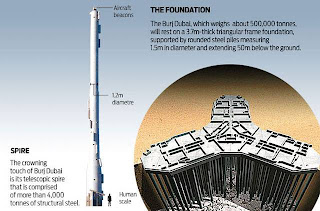 tallest building measured to the architectural top since 2004, the year
tallest building measured to the architectural top since 2004, the yearthe project was announced.
Burj Khalifa employs a record-breaking 330,000 cubic metres of concrete,
39,000 metric tonnes of steel rebar and 142,000 square metres of glass;
and it took 22 million man hours to build.
Other world records for Burj Khalifa include the highest occupied floor in
the world, at over 550 metres (1,800 ft); the highest outdoor observation

"Burj Khalifa is an example of collaboration on a global scale, and the
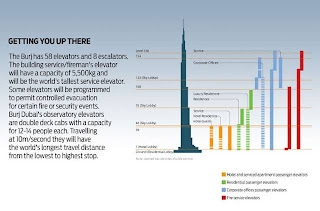 tremendous positive energy that can be generated when people from all over
tremendous positive energy that can be generated when people from all overthe world come together to work towards a common goal. Thousands of
professionals and skilled workers from around the world worked on this
once-in-a-lifetime project."
"More than 60 of the world's leading consultants including South Korea's
Samsung Corporation and New York-based Turner Construction International
realised the design for Burj Khalifa of Chicago-based Skidmore, Owings and
Merrill (SOM)," he said.
Burj Khalifa employed the latest advances in wind engineering, structural
engineering, structural systems, construction materials and methods. All
design considerations took into account the 12,000 people who will live
and work in the tower. The handover to residents of the various components
of Burj Khalifa will begin in February.
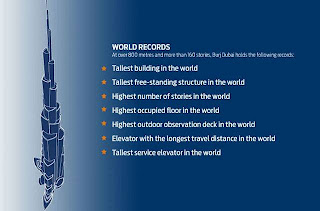 With a total built-up area of about 6 million sq ft, Burj Khalifa features nearly 2 million sq ft of residential space and over 300,000 sq ft of prime office space, in addition to the area occupied by the keenly awaited
With a total built-up area of about 6 million sq ft, Burj Khalifa features nearly 2 million sq ft of residential space and over 300,000 sq ft of prime office space, in addition to the area occupied by the keenly awaitedArmani Hotel Dubai and the Armani Residences. The tower also features
modern lifestyle amenities including clubs, health and fitness facilities, gourmet restaurants and the 124th floor observation deck, 'At the Top.'
Burj Khalifa is the focal point of the 500-acre 'mega-project' by Emaar
ge..
Wednesday, January 06, 2010
Attacks/murder on Indian students in Australia..
The whole Australian cabinet is up in arms against the travel advisory issued by the Govt of India , Min of Ext Affairs to students staying and traveling in Australia. They say the attacks against the Indian students were not racially motivated and such incidents could happen in New Delhi or Mumbai or any other city for that matter. With a series of attacks over the past year against Indians in Australia, it is quite natural for the Indian govt to take serious note and warn its citizens.
If the issue of this travel advisory has got the Australian govt off guard, and has hurt its stature as an international destination for students, the Australian govt should not feel offended. Instead of finding fault with India, it should try to find why Indian students are being targeted in Australia and try to address those issues.
The travel advisories by the foreign govts advising their citizens against traveling to India during times of crisis and terrorist attacks, have been equally painful and deplorable. An advisory being just a diplomatic exercise undertaken by a country warning its citizens of the risks associated with traveling and staying in a troubled country, it should be treated as such and left at it.
Other than a warning by concerned govts for its citizens, the host govt should not attach any exended meaning to the statements and try to make a mountain of a molehill.
ge..
Nobel laurete Ramakrishnan, IIT and CMC ..
http://timesofindia.indiatimes.com/india/Nobel-laureate-Venkat-Ramakrishnan-failed-IIT-medical-entrance-tests/articleshow/5414148.cms
Prof Ramakrishnan was frank enough to admit that ..
Even though the students who get into IIT are very smart and bright, what is ailing our scientific and technological talent ? Why is it that we are unable to strike it big in international science and technology ? Are our engineers and Scientists getting burnt out studying during the college years ? By the time they reach their prime age to carry out research, they are left without any interest or creativity to take their scientific endeavours forward ..
In fact the incident goes to prove that it is not initial (acquired) brilliance by attending coaching classes and postal classes which is going to determine your success, but the sustained interest and creativity in the field.
Our Institutions of National Importance (INIs like IITs, IIMs and IIScs) are great places to be in, but if they are places where instead of nurturing talent they are killing talent,should we not be rethinking on our whole approach to scientific and technological growth in the country ?
ge..
Saturday, January 02, 2010
Joseph Stiglitz - the lessons we have learnt from the economic crisis ..
1. Markets are not self-regulating. Financial regulations are a must
2. Markets do not work the way they are meant to work - in the present instance they have helped to privatise profits and socialise losses
3. Properly designed and implemented stimulus programmes can help revive economies
4. Fighting inflation is not everything, you need to manage your assets too
5. Not all innovation, eg financial instruments, leads to a productive and efficient economy. It can on the other hand, lead to disasters.
Read this simple yet scholarly article from Joseph Stiglitz, Economics Prof at Columbia Uty and Nobel laurete.in Economics, 2001.
http://timesofindia.indiatimes.com/home/opinion/edit-page/Hard-Knocks-Hard-Battles/articleshow/5402863.cms
ge..
Top 10 events of the first decade of 21 century ..
Qualities of a Leader ....
What is leadership?
Leadership can be described as the ability of an individual to influence, motivate, and enable others to contribute toward the effectiveness and success of an organization or group of which they are members. A person who therefore has this ability is a leader.
What qualities does a leader possess?
Leaders possess a number of common qualities.
- Self-awareness: Knowledge of your own values, passions, skills, strengths and weaknesses, an ability to admit and learn from mistakes and to seek information to fill knowledge gaps.
- Integrity: A strong sense of "what is right" and a demonstration of ethical practices that sets the tone for others. A commitment to teaching by example.
- Courage: The strength to act in accordance with your own values and the greater good despite pressures pushing you in other directions. The ability to put the cause before the desire to be popular.
- Confidence: A belief in your ability to meet most challenges that come your way.
- Vision: A strong sense of where you are going as a person and where you think society, your community and your organization should be going – and how it might get there.
- Enthusiasm: A lively interest in the people, issues and events around you, a feeling of excitement about the possibilities, and the energy to guide them towards fruition.
- Innovation: The ability to "think outside the box;" take risks and develop new and effective solutions to old and emerging problems.
- Wisdom: Intelligence coupled with insight and empathy, as opposed to raw intelligence.
- Adaptability: A willingness to be flexible and to respond quickly and effectively to changing circumstances, along with a commitment to continual learning – formal and informal – and the ability to put that learning into practice.
- Strong inter-personal skills: An ability to interact and work harmoniously with others, while being prepared to take on individual responsibilities.
- Effective communication: A willingness and ability to listen to and understand the thoughts, ideas and concerns of others and to clearly communicate your own. A vision is nothing if it can't be sold to others.
- Belief in others: The desire to build the capabilities of others, praise them where appropriate, go into bat for them when appropriate, provide them with helpful feedback and motivate them to do their best.
- Peer respect: An ability to inspire respect, allowing a person to capably lead discussions, maintain discipline and encourage the contribution of others.
- Insight: The ability to see the big picture, a strong sense the stage attained by followers and intuits problems before they arise or before they become insurmountable.
- Sense of humour: The ability to laugh at yourself and relieve tense or stressful situations with humour
- Competence: Others are unlikely to follow the lead of a person who does not appear to know what s/he is doing.
- Delegation skills: A willingness to trust others and cede some responsibility.
Thanks to wikieducator.org for Free elearning content...
Review of ' River of God ', Indian and eastern contribution to the growth of Christianity ..
Riley's, "The River of God" is no doubt an excellent read. But, its subtitle, "A new History of Christian Origins" is misleading since it conveniently omits any consideration of the Judeo-Christian River receiving any waters from any of the "rivulets" of eastern philosophical traditions of Hinduism, Buddhism, Jainism, Taoism etc.
In my humble opinion, the Christian River of God has indeed received some water from the tributaries of many of the "rivers" of Asia and the Far East. This book also suffers from the same deficiencies which exist in Robert Wright's, "The Evolution of God"., viz., the obsessive compulsive fixation with Eurocentric parochialism which systematically excludes the influences of eastern philosophers on the Judeo-Christian religious traditions.. In that sense, it is worse than Wright's contribution to the study of evolution of religious thought in the west.
Riley credits everything to the Hebrew, Greco-Roman and Zoroastrian belief systems, for the evolution of the Trinitarian God of Chrisitanity. He does not even consider the possibilities of any of the Judeo-Christian belief systems having anything to do with the influence of the apophatic concept of Brahman, the exaltations of ascetism in Hinduism, Jainism and Buddhism, the atman or soul posited in the eastern religions etc.
Eusebius in his biography of Socrates writes about a Brahmin in the agora or the market place asking Socrates what he was doing. The latter said that he was interrogating men to understand MAN. The Brahmin is reported as having laughed at this and challenging Socrates, as to how he plans to understand a human without knowing God!
Professor Flinders Patrie (British Archeologist (1853-1942 CE) wrote: " The presence of a large body of Indian troops in the Persian army in Greece in 480 B.C. shows how far west the Indian connections were carried; and the discovery of modeled heads of Indians at Memphis in 5th Century BCE, shows that Indians were living there for trade. Hence there is no difficulty in regarding India as the source of the entirely new ideal of asceticism in the West."
Riley asserts (page 222) that Galilee being the home of Jesus, "it was the region most open to major confluences…. ideas brought and forced upon it by invading empires", viz., Persian, Greek and Roman. It is inconceivable to me that this Professor is ignorant of the role of trade in feeding into the "confluences" of the River of God! Tertullian's (200 CE) conceptualization of the pre-Trinitarian Jesus as an incarnation of God clearly is in the Hindu tradition of the appearance of an "avatar" (incarnate). We also know that Pyrrho (365-270 BCE) and Anaxarchus of Abdera accompanied Alexander the Great to India and interacted with Jain philosphers (gymnophistai- naked wise men) and later founded a school of ascetic philosophy in Athens which attracted many followers.
Riley also asserts that "Greeks were the first to develop a system of mathematics sophisticated enough to calculate the vast distances and circumferences that the geocentric universe required"… Among many western astronmers, it is now generally accepted that Indian astronomy was far more advanced than the Greek's.
Here is an excerpt from the writings of the late Carl Sagan: "Hindu cosmology which first of all gives a time-scale for the Earth and the universe -- a time-scale which is consonant with that of modern scientific cosmology. We know that the Earth is about 4.6 billion years old, and the cosmos, or at least its present incarnation, is something like 10 or 20 billion years old. The Hindu tradition has a day and night of Brahma in this range, somewhere in the region of 8.4 billion years. As far as I know. It is the only ancient religious tradition on the Earth, which talks about the right time-scale… The Hindu concept is very clear. Here is a great world culture which has always talked about billions of years." Aryabhata the Elder (476-550 AD) was the first great Indian astronomer to calculate the Lunar month to be 27.3964693572 days, the oldest astronomical constant calculated to such accuracy.
Riley also credits Pythagoras for contributing to the "confluence" of the Judeo-Christian River of God. But, we know that Pythagoras (582-500 BCE) spent time in India studying both mathematics and philosophy. We also know that "in spite of its name, the Pythagorean theorem was not discovered by Pythagoras. The earliest known formulation of the theorem was written down by the Indian mathematician Baudhâyana in 800BCE. The principle was also known to the earlier Egyptian and the Babylonian master builders. However, Pythagoras may have proved the theorem and popularised it in the Greek world."
Riley observes that Pythogoras believed in reincarnation, became a vegetarian and argued vehemently for the abolition of animal sacrifices to Greek Gods. But, Riley never mentions the reported visit of Pythogoras to India!
Riley credits Plato and other Greek followers for the evolution of the concept of soul, being released from the body after death, and becoming "enlightened enough to dwell among the Gods". The atman (soul) fusing with paramatman (God) is a very ancient and basic tenet of Hinduism. That notion predates Plato's discovery!
Riley also makes the most incredible assertion, viz., "there had never been in the past a savior of the whole world, and no prophets of any culture had envisioned such a savior". The Avatars of Hinduism are referenced in Bhagavat Gita, such as "whenever there is decay of dharma and rise of adharma, then I embody myself"….."for the protection of the Good, for the destruction of the wicked and for the establishment of dharma, I am born age after age". The "I" here is a reference to the Brahman, the nameless, formless, immutable, transcendent God!
Riley states that "every human society has faith. It is given to everyone by God. Beliefs are given by one's culture and century…beliefs evolve". I submit that even one's "faith" undergoes evolution with time and experience. Even Christian faith is no exception to this, despite the Nicene Creed.
While this book can enlighten a western Christian a great deal about the evolution of his or her own Christian faith, for someone like me with roots in Orthodox Christianity and exposures to the tenets of eastern religions and the writings of Christian theologians and scholars like Mar Gregorios, Abhishekatananda and Bede Griffiths, this book left me bemused at the continuing temerity of western theologians to ignore and disregard the stellar contributions of non-Abrahamic faiths to religious thought in general and to Christianity in particular.
C. Alex Alexander
Friday, January 01, 2010
coolest gadget of the decade in India..
The growth of mobile phones in India..
While going thru the Hindu this morning, the above topic struck me like a typhoon. I remember the time when mobile phones had just entered for the first time the hands of Indians around late nineties. Getting a landline telephone connection was very time consuming till then and involved so much of waiting and cajoling the BSNL lineman and commercial officer after waiting for more than 2 - 10 years. We had lots of patience then and were willing to accomodate a corrupt babudom and an equally lethargic DOT.
I remember a colleague of mine reminding me then, just wait, another five years, you will get mobile phones for the asking and for less than Rs 2000.00. How true !! We are already hitting at rates below rs 1000.00 now..
The first time, I got a mobile call was when the phone rang (nokia 3110, bulky one, gifted) when I was engaging a class in 2001, sept or so.. I was one of the few faculty in Goa engg college to have one. For a moment neither me nor the students knew what was happening ! The charges were rs 2.00 for a local call, incoming another Rs.1.00. For students it was a total high funda thing and out of reach of ordinary students. SMS was unheard of.
In just nine years, the cell phone has penetrated so much that from call rates of Rs 20 per minute outgoing and an equal amount for incoming calls in the 90s, presently it is 30 ps per minute for outgoing and free incoming and almost free roaming on BSNL. See the way the gadget has spread over.. Tata got the mobile rates going southward, with their '1p/sec plan' , which got all other players running for cover initially and then meekly submitting themselves finally. The entry barrier to go mobile has come down drastically, with just rs 1000 for a decent instrument, a free sim card, and a prepaid connection for rs 30, one can go mobile and be connected with the world now !!
The penetration as of Nov 2009 is 506.4 million wireless and total 543 million (wireless and land) for a population of 1200 million.( roughly 50 % of population has mobiles now..) The real fact is of these 500 + million connections, at least 100 million are redundant or unused connections. We are the second most networked country in the world regards to communication with terrific potential for growth.
The pace at which we are growing at about 8 - 10 million new mobile connections every month, we will outpace China and become the country with max mobile connections in the near future.
More than the internet, which reaches just 8% of the India population, the coolest gadget of the country during the just completed decade was no doubt, the cell phone.
With India having the world's largest youngster population, 600 million below 26 years of age, we are just looking at more baffling statistics !!
While India has age-old problems like illiteracy, caste system, poverty and so on, China has 'old-age problems'. Its population is ageing fast and less and less of youngsters now have to support more and more elderly, less productive people. The median age of its population is about 46 years while in India it is just 26 years. We have a 20 year demographic advantage and all of that is working to India's advantage..
george..
Top Environmental Sustainability issues globally
Based on the information from sources across the world, here are the top 10 interesting issues in environmental sustainability that are pr...
My popular posts over the last month ..
-
These malayalam proverbs (invaluable diamonds of wisdom) have been collected from eyyal.blogspot.com and other sources on the Intern...
-
Information is processed data. How can you process this data if it is very large running to terabits and is being generated ...
-
Taj Hotel under attack .. Sandeep's mother touching her son one last time .. Sandeep's mother faints on seeing her son'...
-
Chipko movement heroines hugging trees, 26 March 1973, courtesy The Hindu It was in 1730 AD that Amrita Devi Bishnoi along with ...
-
These are photographs of North Kerala,(Malabar region ) taken by missionaries from Basel Mission around 1892 - 1930. The original title a...
-
Learning from history is the most gainful thing anyone can do ..!! From history we learn a lot of things and in turn, we become history to...
-
These are links to some of the writings/readings I have done on Lean related topics over the past many years. You may find them interesti...
-
Simple and brilliant illustration of lean thinking.. Frustration is a state of mind when one is unable to add value to the tasks he/she...
-
TM Varghese statue at Kesavadasapuram juntion in Trivandrum The epitaph .. Recently when I visited Trivandrum, Kerala, I got d...
-
When Dr Thomas Varghese trained at the Tata Memorial Cancer hospital in Mumbai and developer of the Varghese technique in cancer surgery, ...



